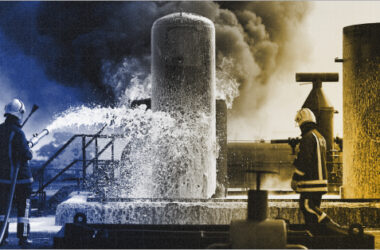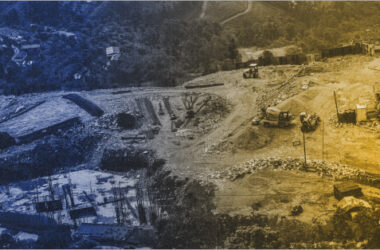Fire Insurance is a type of insurance policy that covers damages caused by fire. It is essential for homeowners and business owners to have Fire Insurance to protect their properties from the devastating effects of fire. However, not all damages caused by fire are covered under Fire Insurance, and it is crucial to understand what risks are covered under this policy. Understanding the risks covered under Fire Insurance is vital to ensure that the policy provides adequate protection. Homeowners and business owners should review their policies regularly and make sure that they have adequate coverage to protect their property from the risks covered under Fire Insurance.
Types of Risks Covered in Fire Insurance
Fire Insurance is usually purchased by homeowners, renters, and business owners to protect their property against fire damage. Understanding Fire Insurance is important to ensure that you have the right coverage in case of a fire.
Fire Insurance typically covers a range of risks associated with fire damage to property. The specific coverage can vary depending on the policy and the insurance provider, but generally, Fire Insurance may cover the following types of risks:
1. Property Damage: Property damage refers to any damage caused to the insured property as well as to its contents due to fire. This includes damage to the structure of the building, as well as any personal belongings that may have been damaged or destroyed in the fire. Typically, Fire Insurance will cover the cost of repairing or replacing any damaged property, up to the policy limit.
2. Liability Coverage: In addition to property damage, Fire Insurance may also provide liability coverage. This means that if someone is injured on the insured property as a result of the fire, the policy may cover the cost of any legal fees or damages that the insured is found liable for. Liability coverage can also extend to cover damage caused to neighboring properties as a result of the fire.
3. Lightning: Many Fire Insurance Policies also cover damage caused by lightning. This can include fires ignited by lightning strikes.
4. Explosion: Coverage may extend to damage caused by explosions, whether they are due to gas leaks, industrial accidents, or other causes.
5. Implosion: Some policies may cover damage resulting from the collapse or implosion of a building due to fire.
6. Aircraft and Vehicles: Damage caused by aircraft or vehicles crashing into the insured property may be covered.
7. Riot, Strike, and Malicious Damage: Fire Insurance may cover damage resulting from riots, strikes, or malicious acts. This includes damage caused by individuals intentionally setting fire to the property.
8. Natural Disasters: Depending on the policy, coverage may be extended to include damage caused by natural disasters such as earthquakes or volcanic eruptions.
9. Bursting or Overflowing of Tanks: Coverage may be provided for damage caused by the bursting or overflowing of tanks, pipes, and other equipment.
10. Bushfire: In certain regions prone to bushfires, Fire Insurance Policies may include coverage for damage caused by wildfires.
11. Storm and Tempest: Some policies may cover damage caused by storms and tempests, including strong winds and heavy rainfall.
12. Subsidence and Landslide: Damage resulting from subsidence or landslides may be covered by certain Fire Insurance Policies.
Exclusions in Fire Insurance
While Fire Insurance is designed to provide financial protection to policyholders in the event of a fire, it’s important to note that not all types of damage caused by fire are covered. In fact, there are several exclusions that policyholders should be aware of when purchasing a Fire Insurance Policy.
1.War and Nuclear Risks: Damage caused by war, invasion, acts of foreign enemies, hostilities, or warlike operations, whether war be declared or not, and damage caused by nuclear reactions or nuclear radiation.
2. Wilful Destruction: Damage caused by wilful acts or gross negligence of the insured or any person acting on the insured’s behalf.
3. Government Action: Loss, destruction, or damage caused by confiscation or nationalization by the government or any public authority.
4. Wear and Tear: Normal wear and tear, gradual deterioration, and damage due to lack of maintenance are usually excluded.
5. Consequential Loss: Loss of profit, loss by delay, loss of market, or any other consequential or indirect loss or damage.
6. Electrical or Mechanical Breakdown: Damage to electrical or mechanical appliances due to breakdown, unless caused by fire.
7. Neglect of Safety Measures: Loss or damage resulting from the insured’s neglect of safety measures, such as not maintaining fire prevention systems.
8. Illegal or Unauthorized Activity: Loss or damage caused by illegal or unauthorized activities, including illegal manufacturing or storage of goods.
9. Terrorism: Some policies may exclude damage caused by terrorist activities unless a separate terrorism cover is purchased.
10. Pollution: Damage caused by pollution or contamination, unless the pollution or contamination results from a peril covered by the policy.
11. Property Outside Designated Premises: Damage to property located outside the premises specifically described and covered in the policy.
How to Claim Fire Insurance
The process for claiming Fire Insurance varies by insurance provider, but there are general steps that are typically involved in filing a Fire Insurance claim. If you find yourself in a situation where you need to make a Fire Insurance claim, consider the following steps:
1. Notify the Insurance Company: Contact your insurance company as soon as possible. Most insurance companies have 24/7 helplines for emergencies. Provide them with the necessary details about the incident, including the date, time, and location of the fire.
2. File a First Information Report (FIR): In case of malicious damage or arson, it’s important to file an FIR with the local police. Provide a copy of the FIR to the insurance company as part of the claim documentation.
3. Document the Damage: Take photographs and videos of the damaged property. Make a list of items that have been damaged or destroyed, including their estimated value. This documentation will be crucial during the claims process.
4. Prevent Further Damage: Take reasonable steps to prevent further damage to the property. This may include covering exposed areas with tarps or boarding up windows. However, do not make permanent repairs until the insurance company has assessed the damage.
5. Cooperate with the Insurance Company: Provide all requested information and documentation to the insurance company promptly. This may include the incident report, photographs, a list of damaged items, and any other documents required by the insurer.
6. Insurance Surveyor’s Assessment: The insurance company may appoint a surveyor to assess the extent of the damage. Cooperate with the surveyor and provide access to the damaged property.
7. Claim Settlement: Once the assessment is complete, the insurance company will determine the amount payable under the policy. This could involve repairing or rebuilding the damaged property, replacing lost items, or providing a monetary settlement.
8. Claim Settlement Agreement: Review the claim settlement offer provided by the insurance company. If you agree with the terms, sign the necessary documents to finalize the settlement. If you have concerns or disputes, discuss them with the insurance company.
9. Receive Payment: Once the settlement is finalized, the insurance company will release the payment. This may be in the form of a direct payment or reimbursement for expenses incurred during the repair or replacement process.
Conclusion
Understanding the risks covered under Fire Insurance is crucial for property owners seeking to safeguard their assets and investments. In this comprehensive guide, we have shed light on the diverse range of perils that a typical Fire Insurance Policy may encompass. As property dynamics evolve and new challenges emerge, staying informed about the inclusions and exclusions in your Fire Insurance Policy becomes paramount.
As we navigate the unpredictable landscape of life, armed with the knowledge of our insurance coverage, we empower ourselves to face unforeseen challenges with resilience. By investing time in comprehending the nuances of Fire Insurance, property owners can build a robust shield against the flames of uncertainty, ensuring a more secure and protected future for their homes and businesses.
Frequently Asked Questions
- How does under-insurance affect a Fire Insurance claim?
Under-insurance means that the insured has not purchased enough coverage to fully cover the damages caused by a fire. In such cases, the insurer may reduce the claim amount proportionately based on the degree of under-insurance.
2. What is accidental damage cover in a Fire Insurance Policy?
Accidental damage cover is an optional coverage that can be added to a Fire Insurance policy. It provides coverage for damages caused by accidental events like spilling paint, breaking a window, or dropping a heavy object.
3. What is silent risk in Fire Insurance and how does it impact coverage?
Silent risk refers to a risk that is not explicitly mentioned in the policy but is still covered under the policy. For example, if a policy covers damages caused by fire, it may also cover damages caused by smoke, even if smoke is not explicitly mentioned in the policy. Silent risks can impact coverage by expanding the scope of coverage beyond what is explicitly mentioned in the policy.
Recent Update
Two separate fire incidents occurred in Goregaon, resulting in one person being injured.
A Level 2 fire broke out in Anmol Pride, a residential building in Goregaon (West) on Wednesday evening. The fire was reported around 6.11 pm, originating on the 26th floor of the 28-storeyed building.
The BMC dispatched seven fire engines and four jumbo tankers to
manage the situation. Mumbai Fire Brigade (MFB) officials reported that the
fire was contained to a penthouse between the 25th and 26th floors of the
building. Initially categorized as Level 1, the blaze escalated to Level 2 due
to combustible items such as curtains, wooden furniture, and electrical
appliances, intensifying the fire.








